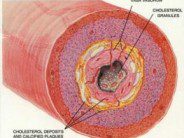 Lung cancer is the most common form of cancer throughout the world. There are over 1.5 million new diagnoses of lung cancer per year, with the industrialized countries being the most heavily burdened. In the United States, lung cancer kills more people than any other type of cancer. In the year 2007, there were 203,536 people diagnosed with lung cancer and 158,683 people who died of the disease in the United States. Currently, medical science does not have a good screening test for the detection of lung cancer. The prognosis of a patient with lung cancer is dependent on the early detection and diagnosis of the disease. Early stage disease is potentially curable with surgical resection of the tumor, but this is usually a rare occurrence and happens by incidental finding. We have previously discussed the recent findings of the National Lung Screening Trial that showed screening with low dose CT scans had a relative reduction in mortality from lung cancer of 20% as compared to screening with single view posteroanterior chest radiography. This screening methodology has been criticized due to its high false positive rate, which leads to further unnecessary invasive diagnostic procedures. In addition, the high cost may make place financial restraints on its widespread use. Researchers from Germany lead by Dr. Thorsten Walles have shown that dogs can accurately detect lung cancer in the breath samples from lung cancer patients. The results of their research were published online before print in the European Respiratory Journal. The researchers used four sniffer dogs to test for the presence of a volatile organic compound in the breath of patients with lung cancer. There were two German shepherds, one Labrador retriever, and one Australian shepherd. The dogs were trained to differentiate the breath pattern of patients with lung cancer from those of normal individuals and patients with chronic obstructive pulmonary disease (COPD). Exhalation breath samples from 220 study volunteers that were healthy, confirmed to have lung cancer, or had COPD were used in the study. The sniffer dogs were able to identify lung cancer with an overall sensitivity of 71% and a specificity of 93%. Importantly, the researchers were able to show that the sniffer dogs were able to detect lung cancer independently from COPD, the presence of tobacco smoke, and food odors. The researchers wrote, “Exhaled breath analysis is a promising approach towards future non-invasive [lung cancer] screening methods. The final goal of our investigation is the development of a clinically applicable screening test for detection of [lung cancer]. Using sniffer dogs as “detection device”, our results set a benchmark for the identification of [lung cancer] in the breath sample of patients and the discrimination of [lung cancer] and underlying COPD. Here, we confirm the presence of a detectable marker in the breath of patients, which is strongly associated with [lung cancer], but independent from COPD. However, this marker or pattern, despite being reliably detectable even in the presence of tobacco smoke, food odors and drug metabolites, is still unknown. In order to proceed towards non-invasive [lung cancer] screening methods, precise identification of compounds observed in exhaled breath of [lung cancer] patients is desirable”. Future studies with focus on the identification of the diagnostic volatile organic compound and development of electronic sensor technologies to detect it. Using these methods, it may one day be possible to replicate the ability of dogs to detect lung cancer and establish a cheap and widely available screening test for lung cancer.
Lung cancer is the most common form of cancer throughout the world. There are over 1.5 million new diagnoses of lung cancer per year, with the industrialized countries being the most heavily burdened. In the United States, lung cancer kills more people than any other type of cancer. In the year 2007, there were 203,536 people diagnosed with lung cancer and 158,683 people who died of the disease in the United States. Currently, medical science does not have a good screening test for the detection of lung cancer. The prognosis of a patient with lung cancer is dependent on the early detection and diagnosis of the disease. Early stage disease is potentially curable with surgical resection of the tumor, but this is usually a rare occurrence and happens by incidental finding. We have previously discussed the recent findings of the National Lung Screening Trial that showed screening with low dose CT scans had a relative reduction in mortality from lung cancer of 20% as compared to screening with single view posteroanterior chest radiography. This screening methodology has been criticized due to its high false positive rate, which leads to further unnecessary invasive diagnostic procedures. In addition, the high cost may make place financial restraints on its widespread use. Researchers from Germany lead by Dr. Thorsten Walles have shown that dogs can accurately detect lung cancer in the breath samples from lung cancer patients. The results of their research were published online before print in the European Respiratory Journal. The researchers used four sniffer dogs to test for the presence of a volatile organic compound in the breath of patients with lung cancer. There were two German shepherds, one Labrador retriever, and one Australian shepherd. The dogs were trained to differentiate the breath pattern of patients with lung cancer from those of normal individuals and patients with chronic obstructive pulmonary disease (COPD). Exhalation breath samples from 220 study volunteers that were healthy, confirmed to have lung cancer, or had COPD were used in the study. The sniffer dogs were able to identify lung cancer with an overall sensitivity of 71% and a specificity of 93%. Importantly, the researchers were able to show that the sniffer dogs were able to detect lung cancer independently from COPD, the presence of tobacco smoke, and food odors. The researchers wrote, “Exhaled breath analysis is a promising approach towards future non-invasive [lung cancer] screening methods. The final goal of our investigation is the development of a clinically applicable screening test for detection of [lung cancer]. Using sniffer dogs as “detection device”, our results set a benchmark for the identification of [lung cancer] in the breath sample of patients and the discrimination of [lung cancer] and underlying COPD. Here, we confirm the presence of a detectable marker in the breath of patients, which is strongly associated with [lung cancer], but independent from COPD. However, this marker or pattern, despite being reliably detectable even in the presence of tobacco smoke, food odors and drug metabolites, is still unknown. In order to proceed towards non-invasive [lung cancer] screening methods, precise identification of compounds observed in exhaled breath of [lung cancer] patients is desirable”. Future studies with focus on the identification of the diagnostic volatile organic compound and development of electronic sensor technologies to detect it. Using these methods, it may one day be possible to replicate the ability of dogs to detect lung cancer and establish a cheap and widely available screening test for lung cancer.
Reference:
Rainer Ehmann et al. “Canine scent detection in the diagnosis of lung cancer: Revisiting a puzzling phenomenon” European Respiratory Journal published online before print August 18, 2011 doi: 10.1183/09031936.00051711










 DrSamGirgis.com is a blog about medicine, nutrition, health, wellness, and breaking medical news. At DrSamGirgis.com, the goal is to provide a forum for discussion on health and wellness topics and to provide the latest medical research findings and breaking medical news commentary.
DrSamGirgis.com is a blog about medicine, nutrition, health, wellness, and breaking medical news. At DrSamGirgis.com, the goal is to provide a forum for discussion on health and wellness topics and to provide the latest medical research findings and breaking medical news commentary.
{ 0 comments… add one now }
{ 1 trackback }